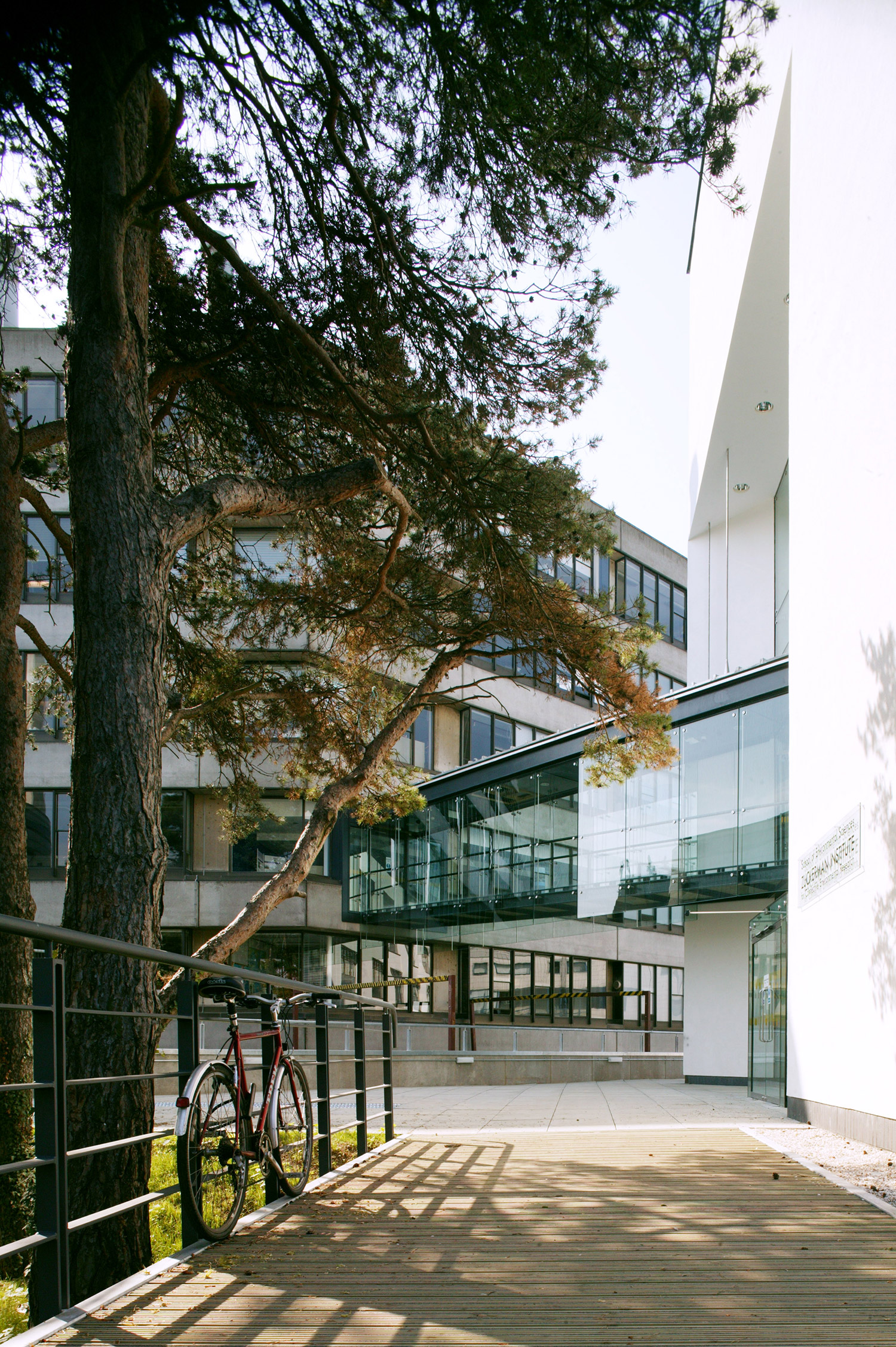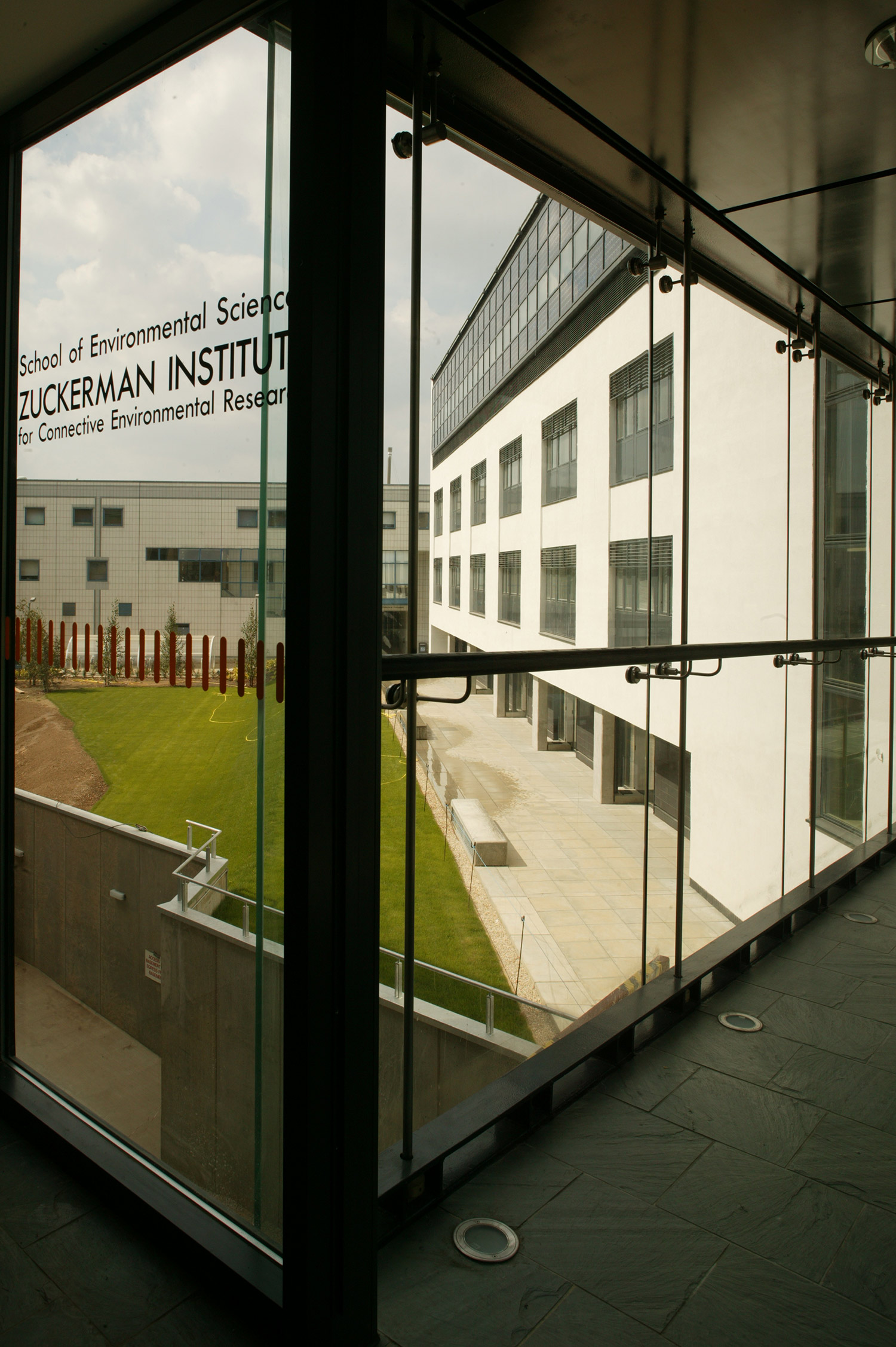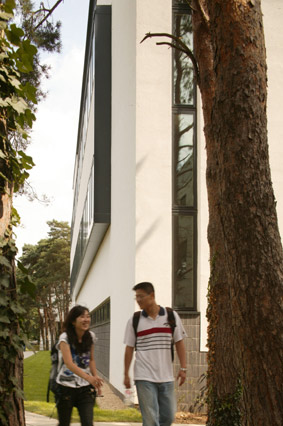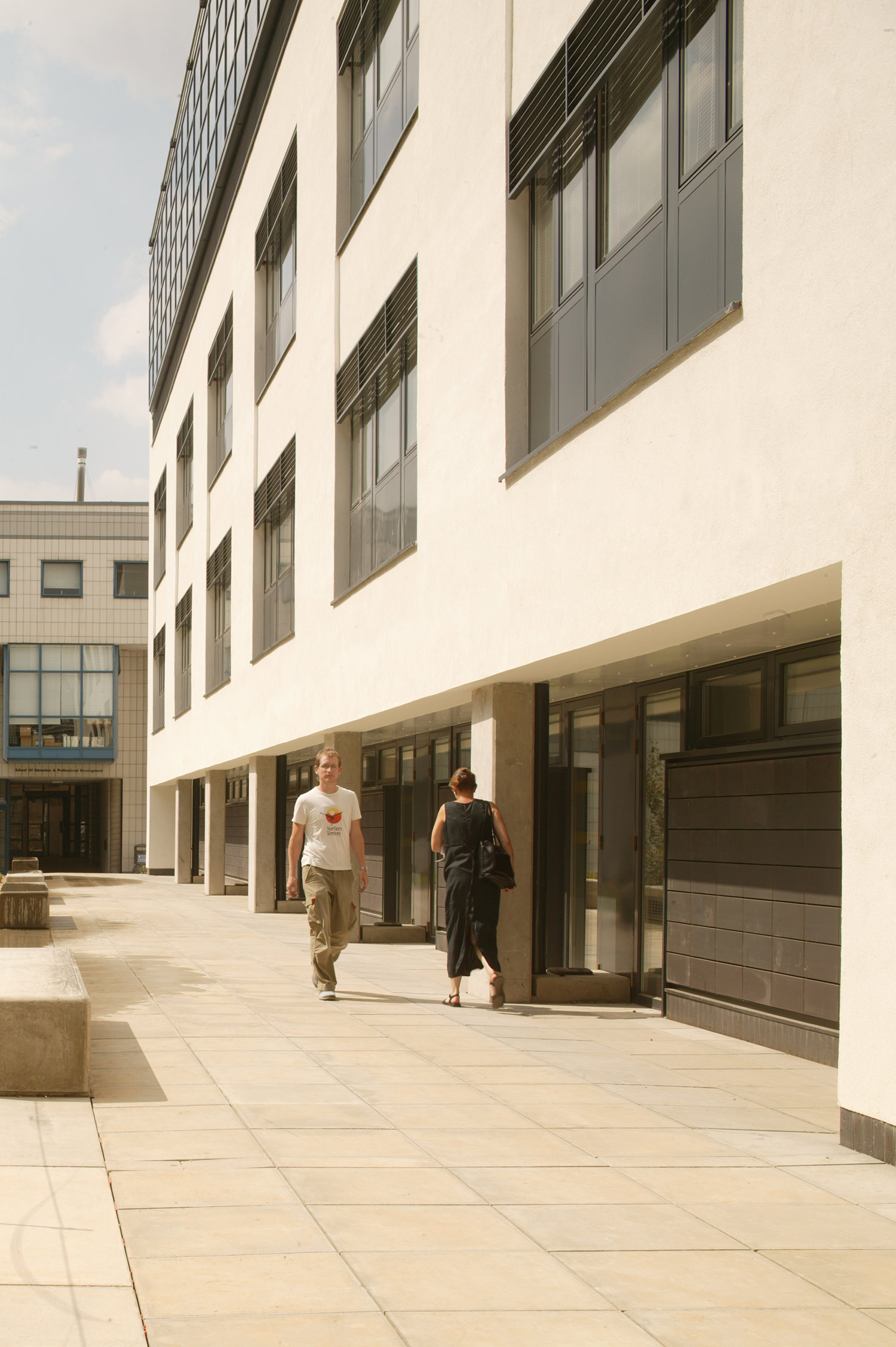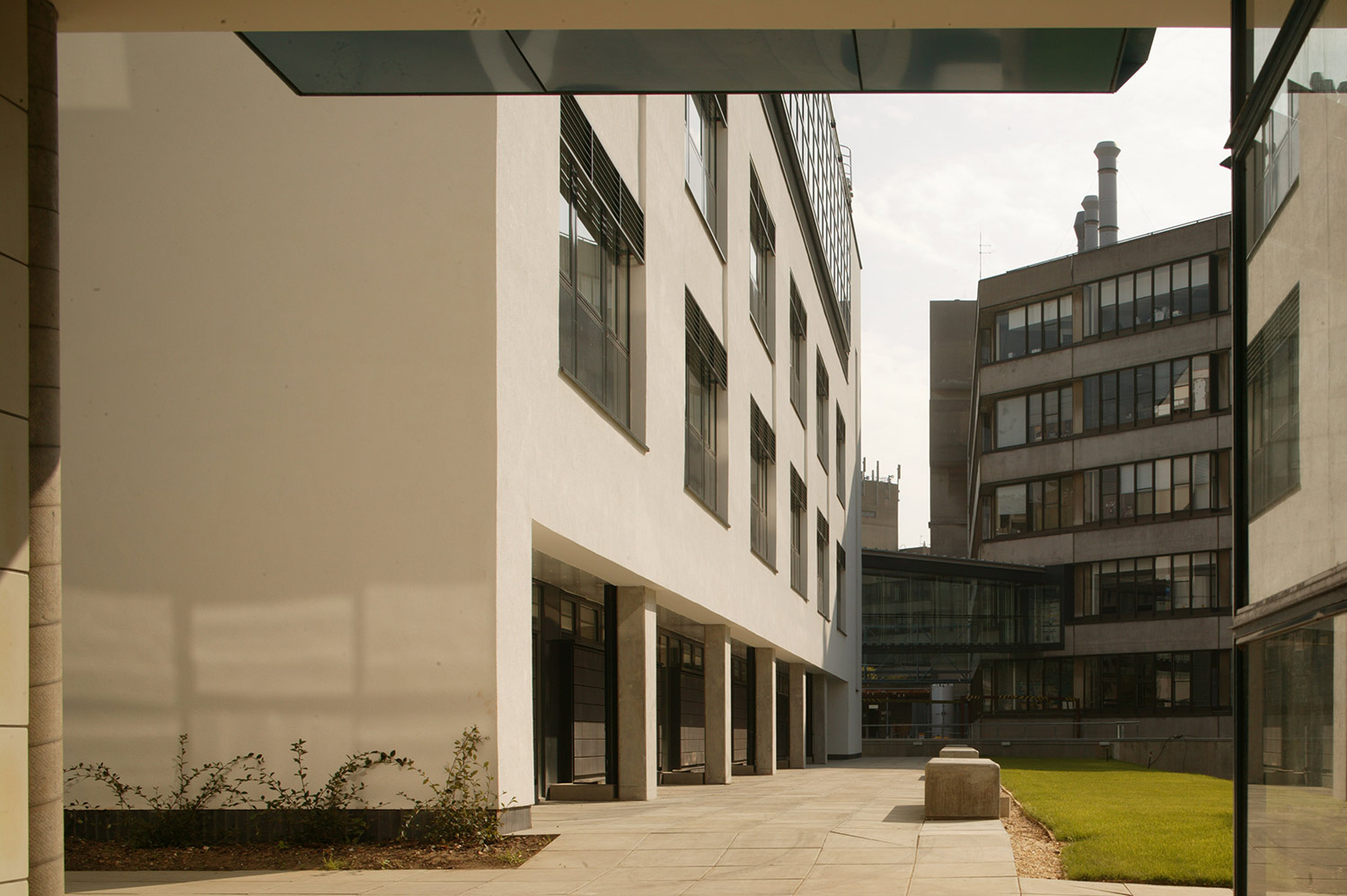Zuckerman Institute for Connective Environmental Research
University of East Anglia
location | Norwich year | 2003 value | £9.5m size | 4,000 m2
The Zuckerman Institute for Connective Environmental Research (ZICER) was created to address environmental challenges through closer connections between business, policy makers, scientists and wider society. This interdisciplinary institute brings together five existing centres within the School of Environmental Sciences The scheme makes a strong statement about energy efficiency and sustainability by exploiting thermal mass, natural ventilation, photovoltaic power and recycled construction materials.
The air tightness levels achieved are still amongst the lowest for this type of building in the UK A photovoltaic array at the top floor exhibition level is the most visible symbol of the building’s environmental credentials. The Institute was officially opened by the Secretary of State for Education and Skills in 2003. The institute is part of the University of East Anglia’s (UEA) internationally acclaimed School of Environmental Sciences and has been described as a “landmark institute on a global scale.”
“[the architects] worked closely with the University to ensure that ZICER makes a striking statement about sustainability... One of the most energy efficient buildings in Europe, it exploits the technologies of high thermal mass, natural ventilation, photovoltaic electricity and recycled construction materials.”
Awards
“Low Energy Building of the Year” 2005 at the Building Magazine Sustainability Awards
“European Association for Renewable Energies” (EUROSOLAR) Award 2004 — Solar Architecture
Shortlisted for the Times Higher Education Supplement’s “Outstanding Contribution to Sustainable Development” award in the Higher 2006 awards
Regional high commendation for the RICS Award 2005 — sustainability


